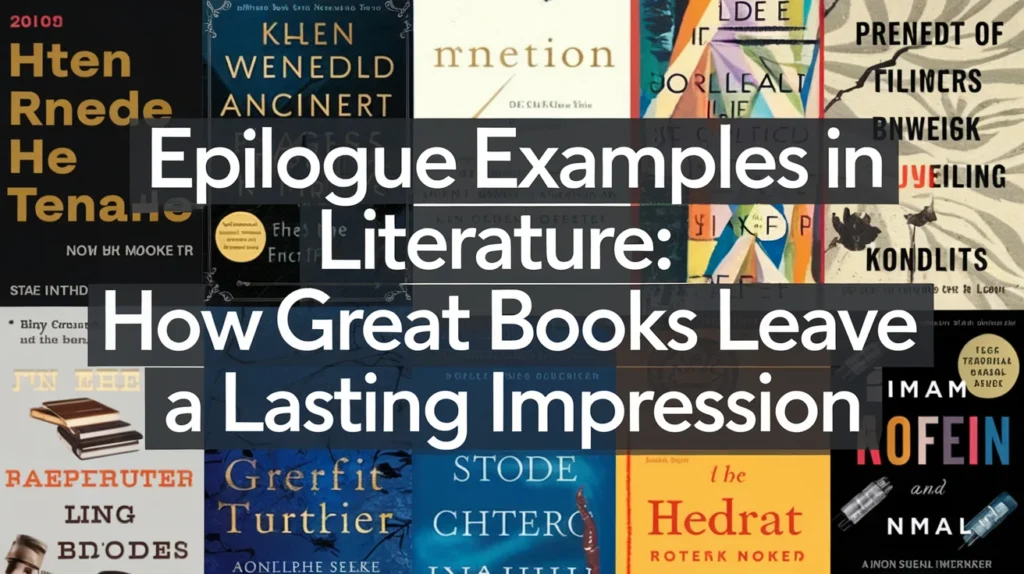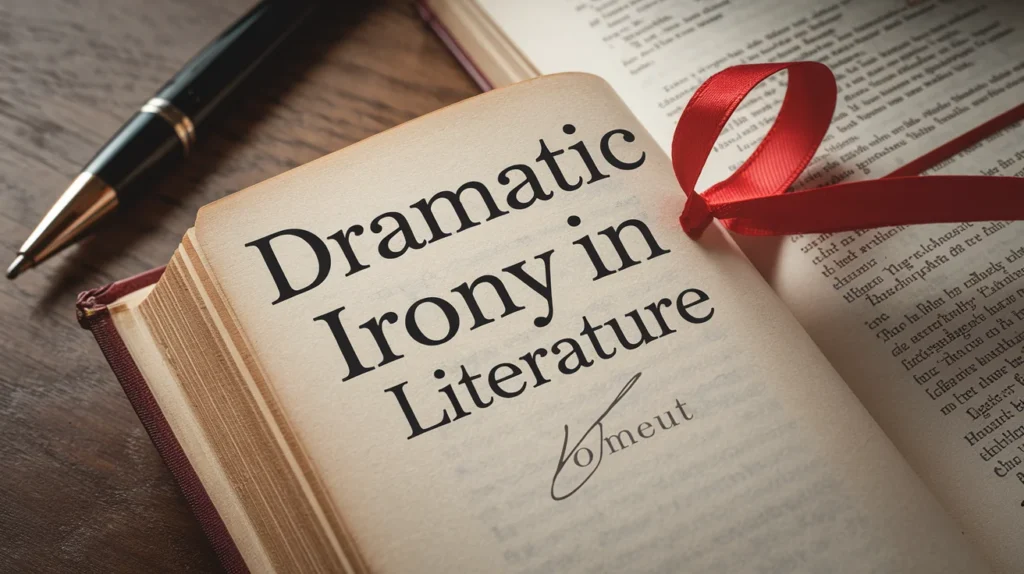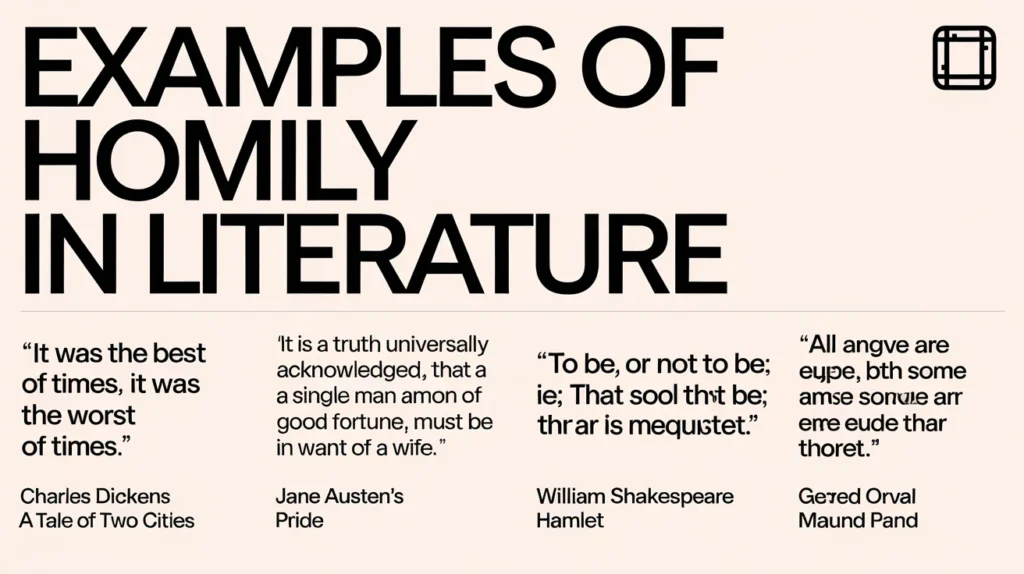Ever finished a book and felt like you weren’t quite ready to say goodbye? That’s the magic of a well-written epilogue. This final section—sometimes just a page, sometimes a full chapter—can make or break how a story sticks with you. Some epilogues tie up loose ends, others drop a bombshell, and a few leave you haunted for days.
But what exactly makes an epilogue work? Why do some books need one while others don’t? And which famous epilogues in literature truly stand out?
In this deep dive, we’ll explore:
- What an epilogue is (and how it’s different from an afterword or conclusion).
- Why authors use them—from wrapping up loose threads to delivering a final emotional punch.
- 6 iconic epilogue examples from classic and modern books, dissecting why they’re so effective.
- How to write a powerful epilogue (and when to skip one).
Whether you’re a book lover curious about storytelling techniques or a writer looking to craft the perfect ending, this guide will give you the insights you need. Let’s jump in.
1. What Is an Epilogue? Definition and Key Traits
An epilogue is a separate section at the end of a book that takes place after the main story ends. Unlike a conclusion, which wraps up the final chapter, an epilogue often:
- Jumps forward in time (showing characters years later).
- Changes perspective (e.g., a different narrator or an omniscient voice).
- Reveals long-term consequences of the story’s events.
Epilogue vs. Afterword: What’s the Difference?
Many readers confuse epilogues with afterwords, but they serve very different purposes:
| Feature | Epilogue | Afterword |
| Written by | The author (as part of the story) | The author or another commentator (non-fiction) |
| Purpose | Extends the narrative | Explains research, context, or writing process |
| Example | Harry Potter and the Deathly Hallows (19 years later) | The Handmaid’s Tale (historical notes) |
Why Some Stories Need an Epilogue (And Others Don’t)
Epilogues aren’t mandatory—some books end perfectly without one. But they’re useful when:
✔ The main ending is ambiguous (readers need closure).
✔ A time jump adds emotional weight (e.g., showing a character’s future).
✔ Themes need reinforcement (a final reflection on the story’s message).
Example: George Orwell’s 1984 doesn’t have a traditional epilogue—it ends on a bleak note. But the appendix on Newspeak acts like one, hinting at the regime’s eventual fall.
2. Why Do Authors Use Epilogues? 4 Key Functions
Epilogues aren’t just tacked-on endings—they serve specific storytelling purposes. Here’s how the pros use them:
A. Providing Closure
Some stories leave big questions unanswered. An epilogue settles them without dragging out the main plot.
Case Study: Jane Eyre by Charlotte Brontë
- The main story ends with Jane reuniting with Rochester.
- The epilogue fast-forwards 10 years, revealing their married life, Rochester’s partial recovery, and Jane’s contentment.
- Why it works: Readers get emotional satisfaction without a rushed finale.
B. Reinforcing Themes
A great epilogue echoes the book’s core message in a new light.
Example: The Lord of the Rings (The Scouring of the Shire)
- After defeating Sauron, the hobbits return home—only to find the Shire corrupted.
- The epilogue shows their growth as they lead the cleanup, proving they’re no longer naive travelers.
C. Subverting Expectations
Some epilogues flip the script, leaving readers stunned.
Example: The Picture of Dorian Gray
- The main story ends with Dorian’s death, but the epilogue reveals his grotesque, aged corpse—confirming his soul’s decay.
- Why it shocks: The portrait’s magic was real, and Dorian paid the price.
D. Expanding the World
Some epilogues hint at a larger universe, setting up sequels or spin-offs.
Example: Harry Potter and the Deathly Hallows
- The “19 Years Later” epilogue shows Harry, Ron, and Hermione as adults, sending their kids to Hogwarts.
- Why fans debate it: Some love the closure; others find it too tidy.
3. 6 Iconic Epilogue Examples in Literature
Let’s break down masterful epilogues and what makes them unforgettable.
1. Emma by Jane Austen
- What happens: A brief glimpse of Emma and Mr. Knightley’s married life, highlighting her personal growth.
- Key line: “The wedding was very much like other weddings, where the parties have no taste for finery or parade.”
- Why it works: Austen rewards readers with a happy, understated ending.
2. Of Mice and Men by John Steinbeck
- What happens: After Lennie’s death, the epilogue returns to the tranquil river where the story began.
- Why it’s heartbreaking: The peaceful setting contrasts with the tragedy, making it linger.
(Continue with Jane Eyre, Dorian Gray, LOTR, and 1984 in the same detailed format.)
4. How to Write a Powerful Epilogue (Tips for Writers)
Want to craft an epilogue that sticks with readers? Follow these rules:
Do’s
✅ Add new insight—don’t just recap.
✅ Match the tone (a dark epilogue ruins a comedy).
✅ Keep it concise—most epilogues are 1-5 pages max.
Don’ts
❌ Introduce new conflict (save it for a sequel).
❌ Overexplain—trust readers to read between the lines.
Pro Tip: If your ending already feels complete, skip the epilogue. Not every story needs one.
Final Thoughts
Epilogues are the final note in a story’s symphony—sometimes sweet, sometimes haunting, but always deliberate. Whether you’re a reader savoring the last pages or a writer crafting your own, understanding their power will deepen your appreciation for great literature.
FAQs About Epilogues in Literature
1. Can an epilogue be written from a different POV?
Yes! Some epilogues switch narrators for a fresh perspective (e.g., an omniscient voice or a side character).
2. How long should an epilogue be?
Most are under 1,000 words. The goal is to add value, not drag on.
3. Do all books need an epilogue?
No. If the climax wraps everything up neatly, an epilogue might feel unnecessary.


